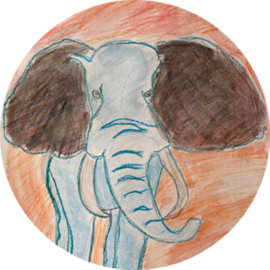Teach, Don’t Tell : Lessons in Mastery, From Tennis to Welding
There’s a song by Skunk Anansie called Intellectualise My Blackness—a catchy tune that takes me back to my festival-going heyday. Beyond the nostalgia, I’ve always been intrigued by that word: intellectualise.
Dictionaries define it as the opposite of gut feeling, signalling a detachment from raw, emotional essence. To “intellectualise” is to dilute genuine experience, to distance oneself from visceral reality.
The idea of this sometimes surfaces during my tennis practice.
I’ve been at it for years, dragging myself out of bed twice a week to squeeze in sessions before office hours. It’s probably gotten easier, though I haven’t noticed. Tennis is hard—hard in a way that feels distinctly different from the usual trials and tribulations of adult life.
The last time I subjected myself to anything similar might have been learning to drive, or even earlier, mastering how to ride a bike or swim. These are skills we take for granted, forgetting how humbling it is to acquire new motor abilities as an adult.
Over the years, I’ve cycled through several tennis trainers. While they’ve all been lovely people, I’ve noticed a pattern: the less effective ones tend to talk too much.
This tendency often reinforces itself. When a trainer realises their message isn’t getting through, the default response is usually to compensate by talking even more.
Occasionally, they catch themselves. Just the other day, I heard an exasperated coach shouting at a group of apprentices, “Don’t do what I say, do what I think!”
It was said in jest, of course, but jokes often reveal what’s hard to articulate.
In this particular case I think the trainer was trying to formulate that he realised he was intellectualising tennis, and to admit in his own way that it didn’t work very well.
Great trainers, by contrast, seem to teach with an effortless elegance akin to a perfectly played game—like there’s nothing to it.
So how do stellar coaches go about their business? It’s not like they resort to miming; they do talk, but they communicate differently. I’ve been trying to figure out exactly how. Recently, I came across a clue.
Surprisingly, the breakthrough didn’t happen on the court but in a grimy old garage, where I’d gone to pursue something I’ve long aspired to: learning how to weld properly.
I’d been welding amateurishly for years without really knowing what I was doing. So I signed up for a course run by Günther, a retired master craftsman who’d spent his life teaching people to weld. The best teacher I could have wished for.
Günther also unwittingly helped me understand how certain types of skills are best transferred. He revealed this through his naturally talkative personality, which was clearly on display as he walked us through the mandatory safety aspects of handling big bottles of explosive gas. That part dragged on endlessly, as every detail sent Günther down memory lane, drawing on a lifetime of anecdotes. While entertaining, it added little to the actual learning process.
After hours of Günther’s anecdotes, we suddenly found ourselves, equipment in hand, grappling with a hissing, 3000-degree welding arc. It was a bit like learning to fly by going straight from theory to taking the controls of an aeroplane at cruising altitude.
As this abrupt transition occurred, it felt as though Günther had transformed into an entirely different persona. The jovial chattiness vanished, giving way to a battle-hardened drill instructor armed with a terse arsenal of single-word commands. He would creep up to each student’s shoulder, fix us with an intense stare as we fumbled with the arc, and bark sharply into our ears: [FASTER]. [SLOWER]. [CLOSER]. [STOP].
The precise timing and clarity of those instructions proved remarkably effective. After two intense days, it seemed as though we had absorbed years’ worth of tacit skills into our muscle memory.
This experience brought to mind the principles of obedience training. It struck me that Günther’s method worked because it bypassed overthinking, much like how skilled trainers use a succinct click to mark exactly where the animal did something right.
Perhaps we humans like to kid ourselves that we’re so much smarter than dogs or dolphins. But we’re animals too, built on the same instincts and drives. Our edge? We just got better at hiding it behind big ideas.
